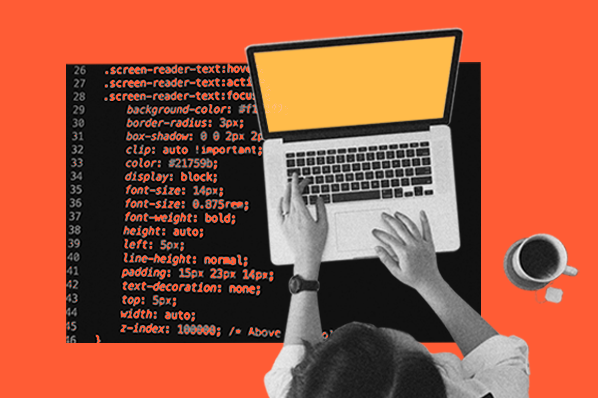Boost Customer Experience with Cutting-edge Fort Worth Web Development
Boost Customer Experience with Cutting-edge Fort Worth Web Development
Blog Article
Exactly How to Utilize Internet Design Concepts to Increase Your Site's Involvement
In the competitive digital landscape, the capability to astound and retain visitors rests on applying efficient website design concepts. Prioritizing a seamless user experience while ensuring ease of access can substantially boost engagement. This includes refining navigation frameworks for intuitive surfing, optimizing sites for mobile responsiveness, and utilizing aesthetically engaging components. The strategic usage of color and typography additional boosts the individual's journey, developing a welcoming and interactive environment. As we check out these principles further, take into consideration exactly how each element can change an easy check out right into an engaging interaction, unlocking the potential to raise your site's effect.
Enhancing Navigating Framework
A well-structured navigating system is vital for optimizing user engagement and guaranteeing a smooth browsing experience. It works as the foundation of any kind of site, guiding individuals through web content effectively while lowering the cognitive tons related to finding information. Effective navigating design is not merely about visual appeals but involves a critical setup of components that promote accessibility and simplicity of usage.
A messy menu can bewilder customers, possibly driving them away. Categorizing material into logical and instinctive groups guarantees individuals discover what they are looking for with very little effort.

Optimizing Mobile Responsiveness
With the boosting prevalence of mobile phones, maximizing mobile responsiveness is necessary for maintaining individual interaction and fulfillment. As even more customers access sites by means of tablet computers and smartphones, guaranteeing your website is mobile-friendly is not just helpful-- it's critical. A responsive layout instantly readjusts its design and material to fit any kind of screen dimension, giving an ideal watching experience across gadgets. This adaptability reduces the requirement for zooming or straight scrolling, improving usability and maintaining users on your site longer.
To achieve mobile responsiveness, beginning by utilizing flexible grids and formats. Use CSS media queries to make certain style components adapt to various display dimensions. Prioritize touch-friendly navigating by expanding buttons and spacing links adequately, decreasing unintentional clicks. Additionally, take into consideration maximizing images and media to lower load times, which can dramatically affect user retention on mobile platforms.
A crucial aspect of mobile responsiveness is making certain that content remains obtainable and understandable. Usage bigger font styles and concise text to enhance readability on smaller screens (Fort Worth Web Design). Regularly examining your website on different devices and internet browsers aids identify prospective problems and fine-tune customer experience. By prioritizing mobile responsiveness, you accommodate a more comprehensive audience, ultimately increasing interaction and driving site success.
Crafting Compelling Visuals
Exciting visuals are the cornerstone of involving website design, perfectly drawing individuals right into the site's narrative and improving their total experience. They offer an immediate aesthetic impact that connects the brand's identification and message, cultivating a connection between the material and the customer. To achieve this, visuals must be thoughtfully crafted and strategically put to lead customers' focus without frustrating them.
Premium images read the full info here and graphics must be used to produce an aesthetically attractive setting that motivates exploration. This entails picking visuals that are not only cosmetically pleasing but likewise pertinent to the web content, ensuring they add worth as opposed to function as simple decor. Including personalized pictures or infographics can additionally enhance understanding, as they simplify complex information and make it extra digestible.
Additionally, the assimilation of multimedia components such as computer animations and videos can better enrich the individual experience. These vibrant visuals catch focus and can successfully demonstrate products or narrate tales, making the material a lot more memorable. It is important to balance these components to keep a natural style that supports the website's goals. By prioritizing compelling visuals, web designers can significantly boost customer interaction, inevitably leading to greater retention useful reference and conversion rates.
Utilizing Strategic Color Use
Integrating color purposefully is a basic facet of website design that matches compelling visuals in captivating customers. Shade not only improves looks but also plays a vital duty in guiding user habits, establishing brand identity, and evoking psychological reactions. By recognizing shade theory and psychology, web developers can create a unified and interesting customer experience that maintains visitor interest.
To utilize color successfully, think about the psychological impact each color might communicate. Consistency in color combinations throughout a website aids solidify brand name acknowledgment and user familiarity.
Contrast is an additional essential factor to consider. High contrast in between background and message colors enhances readability and ease of access, making sure that content is quickly digestible for all individuals. Accent shades can be strategically used to attract interest to essential elements such as call-to-action buttons or crucial notices, enhancing individual interaction and conversion prices.
Ultimately, a well-balanced color method not just improves visual allure however also significantly contributes to a site's general engagement, assisting customers without effort with their on the internet trip.
Improving Typography Choices
Typography acts as the backbone of internet layout, exceptionally affecting customer involvement and the general aesthetic of a website. Reliable typography look at this site enhances readability and promotes a seamless user experience, urging visitors to explore content better. To maximize typography selections, web designers have to think about aspects such as typeface option, dimension, line spacing, and shade contrast.
Sans-serif typefaces such as Arial and Helvetica offer modern quality, while serif fonts like Times New Roman communicate typical professionalism. Incorporating font designs can develop aesthetic pecking order, guiding individuals' interest to vital info.
Font dimension and line spacing also play an essential function in readability. Typically, a minimum font size of 16 pixels is recommended for body message to guarantee simplicity of checking out across devices. Sufficient line spacing, normally 1.5 times the font dimension, protects against message from showing up cramped.
Last but not least, shade comparison between text and background is basic for access. Tools like the Web Web content Ease of access Guidelines can help confirm that comparison degrees fulfill advised standards, making sure material is obtainable to all users.
Conclusion

As even more customers accessibility sites by means of mobile phones and tablet computers, guaranteeing your site is mobile-friendly is not simply beneficial-- it's necessary. On a regular basis testing your website on various devices and browsers helps identify potential concerns and refine user experience.Exciting visuals are the foundation of involving web layout, seamlessly drawing users into the site's story and improving their total experience.Typography serves as the backbone of internet design, greatly affecting customer engagement and the general aesthetic of a website.Including efficient internet design principles considerably improves site engagement by concentrating on individual experience and access.
Report this page